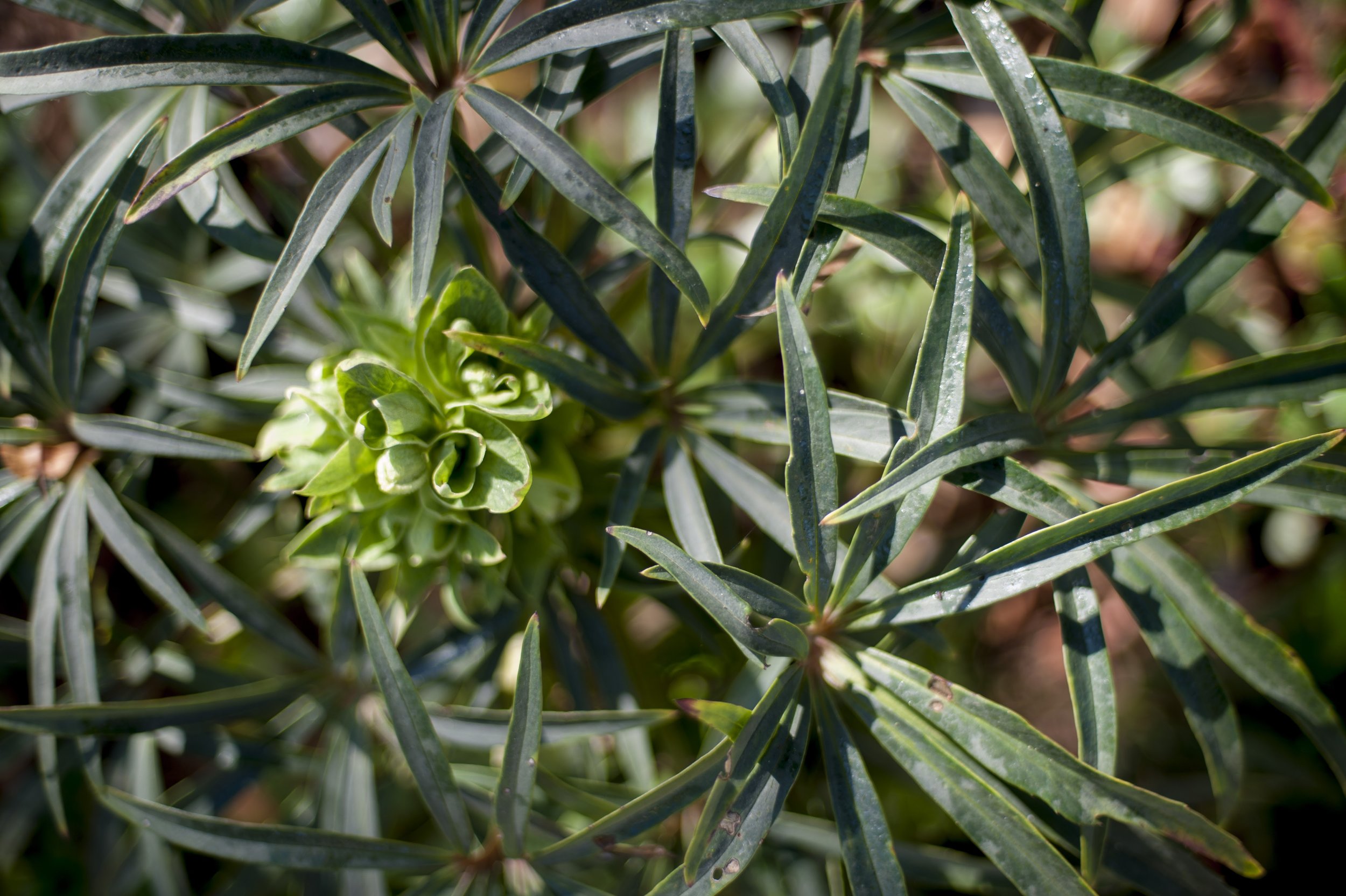January Showers Bring January Flowers
/Unbelievable. Last month as I wrote this column in late December, the nurseries were full of Christmas trees. Now as I’m writing in late January, the plum trees are beginning to fly the bright flag of spring. Here by the Bay and the mild Pacific, winter turns on a dime and walks away. Spring flaunts right in with calla lilies, hellebores and winter blooming salvias, fuchsias, and aloe.
Now our long growing season can unfold slowly over the next five months. Like a twelve course meal, each layer of spring unfolds and reveals itself to amuse the mouth and eyes. Finally in May with flowers trumpeting overhead, weeds blooming madly, and hedges bursting out of their boundaries gardeners throw up their hands and cry “enough” just as the rains end and we enter the dry half of our annual cycle.
Calla lilies reaching for the sunlight at GFE.
One of my favorite things about our climate is that even in January we get a new generation of bloom arriving in the garden. Some of the fresh January treats are familiar in old San Francisco gardens, such as the tall, sexy calla lilies with their lush curves, and the bright tree aloe, whose dramatic red-orange flowers support hummingbirds through this hungry time of year. Last summer we divided an enormous clump of tree aloe (Aloe arborescens) by simply sawing off the largest rosettes and sticking them right in the sandy soil on either side of our new stairs leading from the compost area up to the street above the garden. These sturdy foot soldiers of horticulture got busy growing roots, and now they are blooming prolifically up both sides of the staircase and promising to grow into muscular clumps that can help stabilize the steep sandy hillside.
Tree aloe.
Hellebores are among the choicest garden plants to flower in January, because in addition to brightening the garden with their subtle pale pink and green “Christmas roses,” they also keep a neat mound of foliage all year long. Their striking texture enlivens shady spots, and there are several varieties which have low water needs making them a good choice for that toughest of garden locations: dry shade. Bear’s foot hellebore (Helleborus foetidus) and Corsican hellebore (Helleborus argutifolius) can be seen blooming now at GFE in the shady area to the left of the northernmost 7th Avenue gate.
Bear’s foot hellebore.
There is a whole group of large, dramatic shrubs from Mexico and Central America beginning to bloom now at the GFE. Fuchsia paniculata is a large shrub which loves an understory location with bright shade or part sun. Resistant to the fuchsia mite, Fuchsia paniculata is beginning a long bloom period now as large sprays of tiny purple trumpets begin to open at each branch tip. Ours is blooming in the northernmost section of the 7th Avenue exterior border.
A honeybee enjoying the Fuschia paniculata.
If you continue walking north to the very end of the exterior border, it turns the corner and ends by our neighbor’s house. In the final corner of the border, Senecio petasitis is opening its burgundy buds into small bright yellow daisies. Its large, tropical looking, slightly fuzzy leaves are handsome all year long, and it is a trooper, performing in shade and filling dark spaces but when it blooms in January, its brightness and generosity makes it everyone’s favorite. The plant in the GFE border was also a cutting from my own specimen in my home garden. I just stuck it in the ground and it grew with no fuss, blooming for the first time this year.
Senecio petasitis.
Inside the garden past the 7th Avenue gate, you can find a large princess flower (Tibouchina urvilleana) another gorgeous winter bloomer, and on the sunny hillside above it you will see an enormous, loose-limbed salvia with striking bright red flowers held on dark, almost black, stems. Salvia gesneriiflora ‘Tequila’ makes January worth waiting for all by itself.
Salvia gesneriiflora ‘Tequila’ in bloom at GFE.
At the other end of the garden, facing Lawton Street, stands another large dramatic salvia which is just starting its bloom. Salvia karwinskii is about eight feet tall and maybe half as wide. It’s covered now with large, promising buds which have begun opening and which will reach full bloom in February. The coral flowers are held in dark bracts on blackish stems, giving the whole plant a dramatic look worthy of an entrance or other prominent spot sunny spot in the garden. The plant stays neat all year round, with it grey-green, slightly fuzzy leaves clothing it densely even when it is out of bloom.
Salvia karwinskii, a GFE kids’ favorite for its tasty nectar.
For gardeners, the challenge of this time of year is to keep up with winter pruning and weeding between rainstorms so that the faded, battered stems and branches of summer blooming plants are neatly cut back to reveal the fresh winter flowers in a spacious and tidy setting. Weeds are already setting seed and forming new bulblets, so removing them can’t wait either. A nice thick layer of mulch will protect the soil from being compacted by heavy rain while discouraging the return of the weeds. So grab your pruners, a bucket, and a sack of mulch, and run out between the raindrops to give your garden some love. It will love you back, and you don’t have to wait for spring in our climate to see results!









